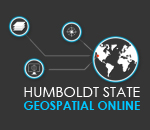What is Remote Sensing?
Introduction
Remote Sensing is the science of obtaining information or data about objects or areas from a distance. This is a very broad definition and includes everything from data collected via satellites to ground based remote sensors. Remote sensing has a wide range of applications in many different fields. Remote sensed data and imagery are now an integrated part of our daily lives.
Examples of Common Remote Sensed Data
- Digital and Analog photographs
- Satellite Imagery used in mapping software (i.e. Google Maps)
- Weather maps and data
- Radar imagery
Why Remote Sensing?
Remote sensing gives us the ability to observe and collect data across large regions. It also makes it possible to collect data in dangerous or inaccessible areas. For example, it would be extremely difficult to collect field data from the arctic year round, but satellites can easily measure the sea ice throughout the year. Remote sensing also provides a unique opportunity to map and monitor global change. The repetitive measurements from satellites and other data provide ways to monitor and quantify changes in the environment. Remote sensing can also be a cost effective way to collect large amounts of data. Remote sensed data can be used to model our environment and broaden our understanding of the Earth’s systems. Another important aspect of remote sensing is that sensors can measure energy at wavelengths which are beyond the range of human vision, allowing us the measure and visualize phenomenon that are beyond the human senses.
Remote Sensing Applications
Remote sensing data is now employed in a wide variety of disciples from natural resource management to urban planning and development. Explore some applications below:
